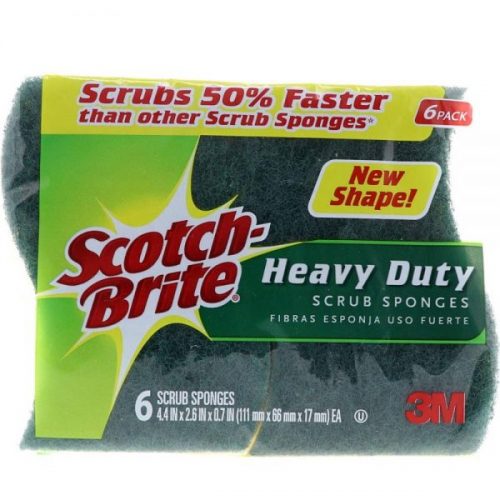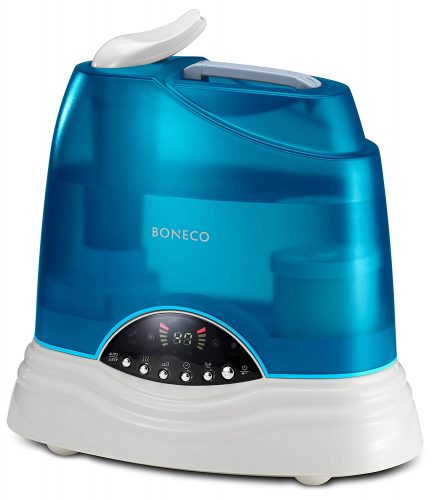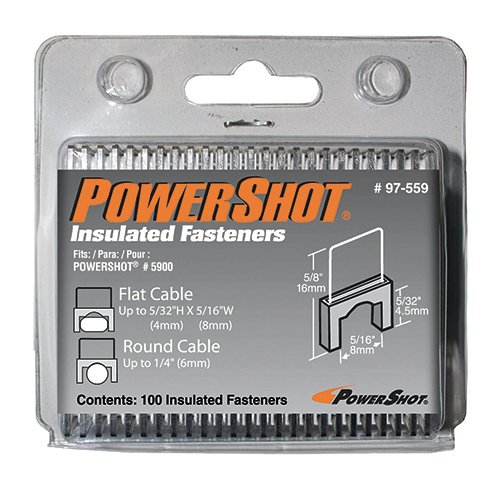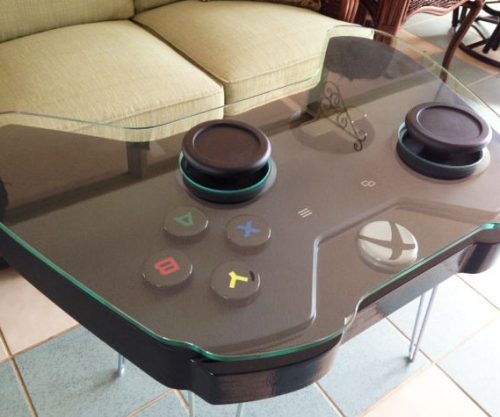After some longterm testing, we’ve decided the best sponge for most kitchens is the Scotch-Brite Dobie Cleaning Pad (especially when paired with the Scotch-Brite Heavy Dutyfor tougher messes). It feels good in use and makes quick work of almost any mess.
What makes a good sponge?
What we’re looking for is something tough enough to take out difficult and/or stuck pieces of debris, gentle enough to use on delicate glassware, and stamina that is hopefully less fleeting than internet fame.
Sponges can be used for many purposes, but it is the kitchen that provides the best overall testing grounds for cleaning aptitude and durability. Whether it’s washing dishes, scouring dried-on cooking remains from pots and pans, or cleaning an oven, a sponge that excels in those environments will do well in any other.
Dishcloths are another option, but they aren’t worth your time because they lack the scrubbing power found on even the lowliest of combo sponges. There are those who think dishcloths are less prone to capturing bacteria and/or are easier to clean, but the fact of the matter is they both pick up germs and bacteria at the same rate and are just as easy to disinfect according to this peer-reviewed article from The Internet Journal of Food Safety, where no statistically significant differentiation was reported between the two (page 21).
There are essentially three types of sponge:
-
Pure Cellulose/Foam: These are your basic sponges that are good for absorption but terrible at scrubbing. Not great on their own.
-
Scouring Pads: These are all scrub and no absorption. Also not great individually.
-
Combo: These offer scrubbing power with the absorption of a sponge. This is what you want when you’re getting an all-purpose sponge.
Also in the pure cellulose/foam category are pop-ups such as the Trader Joe’s pop-up sponge. They are handy, cheap and compact, coming in packages of 12. Unfortunately, they are not terribly durable. They may provide an adequate option for makeup or even bathing, though there are several products far better suited for either task. However, they are not recommended for tough cleanup jobs. The only advantage that the pop-up has over the regular pure cellulose sponge is how compressed and affordable it is. To consider the category (both pop-ups and otherwise) as a whole: pure cellulose/foam is like trying to rock a house party using Pachelbel’s Canon: way too soft to ever get the job done without some big help. Pass.
One to two dollars is a reasonable amount to pay per sponge.
One to two dollars is a reasonable amount to pay per sponge. You’re not getting anything by paying more and the generic options are just not up to snuff. Microfiber sponges tend to average somewhere around $4, as do green options like the Twist. Combo sets tend to go for around $2 per, and we found deals on the O-Cel-O and the Scotch Brite that are pretty close to $1. Of course, if you are Howard Hughes and don’t mind having a box of 100 sponges lying around your living space, these bulk sponges for $0.50-a-pop may be a viable option, although we haven’t tried them. They are advertised as being the equivalent of the Scotch-Brite Non-Scratch Scrub, which is a notch below our recommended Heavy Duty variant.
How did we decide what to test?
After looking at basic material composition and consulting with various people involved in professional cleaning and analyses of the products and reviews online, I was able to narrow down a list of the likely suspects. Then we bought sponges and ran them through a battery of tests.
How did we test?
We took our sponges into the kitchen and put them through the (metaphorical) ringer for 2 months. We caked on various pieces of sticky gunk onto delicate glassware and some ceramic plates. We also cooked things onto teflon pans (which you should avoid using), steel pans and one old and super-nasty oven in a dour state of recovery (after incubating some molasses and caramel sea salt brownies, among other things). We also hooked up sponges to a drill and scrubbed teflon and stainless steel pans for ten minutes, to check for scratches.
Our pick
The Scotch-Brite Dobie Cleaning Pad is the best sponge for all-purpose scrubbing. While it’s not as effective on the toughest messes as our previous pick, it’s far gentler for everyday use while still being tough enough for most tasks.
It’s a little different-looking, with a polyurethane core wrapped in a slit film-and-fiber mesh, which the company claims helps grab stuck food particles. Unlike other sponges, the Dobie manages to emulate a combo sponge without needing two different surfaces: its mesh is simultaneously strong enough to clean most of the tough messes you’ll make in the kitchen and soft enough to clean delicate wine glasses.
Chowhound co-founder and Sweethome reader Jim Leff turned us onto the Dobie sponge. He said, “It lasts and lasts, and has just the right amount of abrasive cut.” The trick with a Dobie, he said—the best way to get the cleanest clean—is to squirt dish soap on both sides, hold under hot water, and squeeze to distribute the soap. “This ensures a clean start, and you’re ready to go.”
In our testing, the Dobie held a lot of soap, and stayed sudsier for longer than any of the other sponges. One initial soap squirt was enough to complete a sinkful of filthiest dishes. I never once had to re-up on soap—even after the toughest jobs.
During field testing, the Dobie effectively cleaned stainless steel pans with burnt-on chicken, glasses upon glasses after several parties and caked-on cookie dough, all quickly and easily. Additionally, it’s a pleasure to use—an odd designation for a sponge, but certainly true for the Dobie. I was excited to pick it up, much more so than for any other sponge. Some of the other sponges flaked apart, or clogged up with gross food. Not so for the Dobie. True, small food particles did occasionally get caught in the mesh net, but a quick rinse under the water typically sorted that out.
Leff isn’t the only fan: Reviewers at Amazon, Walgreens and Drugstore.com have given it nearly five stars. Thomas V at Expo TV praises how long it lasts, and says “the grainy texture really gets all the dirt away,” and The Absent Minded Housewife loves its multipurpose uses, for dishes as well as dirt, showers and faucets. And Faith Durand from The Kitchn calls them “humble little cleaning tools. … They’re tough enough to clean stubborn stuck-on spots, unlike other plastic or foam sponges—but they aren’t as harsh as stainless steel.”
When Jim Leff commented on our last pick, in his blog post, he said: “Scotch Brites are too soft on one side, too abrasive on the other, and they clog up and fall apart (all over your dishes and pots) in no time.” All valid points we discovered over time, we had to admit—the Scotch-Brite’s abrasive side is really abrasive, which is why we still think it’s a great pick for difficult tasks. We wanted to do some hands-on testing first before we swapped our pick, so we tried them both out for a month, doing some dedicated testing (with the screwdriver and pans) in addition to just using them like a human: for everyday scrubbing, cleaning and washing up.
When we tested them head-to-head, it was clear which one was superior. After 10 minutes constantly scrubbing the stainless steel pans, the Dobie had barely made a dent, but the Heavy Duty pads created noticeable scratches after just three minutes. The Heavy Duty scratched off far more of the teflon pans non-stick surface than the Dobie—although with any sponge, we recommend taking extreme care with teflon pans.
Some flaws
The Dobie isn’t perfect; it does have a few flaws.
It can struggle with really really tough messes, like caked, baked-on oil. And some reviewers complain that they start falling apart after a while—but that’s a problem with all the sponges we tested, and generally, we found the Dobie lasted the longest. And as Jenn at Tiny Choices pointed out, despite saying she’s “never left with crusted-on anything, it never scratches, and it lasts for months.”
Its environmental footprint isn’t so hot either. It’s made of polyurethane, which is not biodegradable and generally not so great for the environment because manufacturing it requires hydrocarbons to “blow the foam into shape,” according to About.com’s Earth Talk. They can also emit formaldehyde and carcinogenic dioxins if you burn them—which we recommend you not do. That said, they do last longer which means you use fewer of them.
There are sponges that are softer and tougher, but the Dobie offers the best compromise between the two for the one sponge to handle most tasks. That said, sometimes you need to bring in the big guns…
For tough messes Better for Caked-On Goo

We also recommend the Scotch-Brite Heavy Duty as a second sponge.
The Scotch-Brite Heavy Duty was our original pick because of its unparalleled raw scrubbing ability on one side and delicate touch on the other, which is why we still recommend it for tough messes and things like fine glasses. The soft side is made of compostable cellulose, which tends to be sturdier than polyurethane foam-based competitors; the rough, scrubbing side is made of nylon strong enough to compete with metal scouring pads. It’s a great sponge, but it doesn’t handle everyday, middle-of-the-road cleaning jobs as beautifully as the Dobie. It’s best for tough messes.
We found the Scotch-Brite Heavy Duty is far and away the strongest on the market. In our field test, it effectively cut through dried, caked-on, cooked-in oil on a stainless steel pan. This was on a stain that other sponges made less of a dent into than a BB fired on a Sherman Tank, but the Scotch-Brite broke through easily. The nylon side made handling the grease from the oven rather easy to handle, whereas some of the less-coarse scrub sides on other sponges became plugged up and lost their cleaning efficacy. It also has a standard, light-weight cellulose sponge on the opposite side, which will handle lightweight jobs just fine, although not nearly as good as the Dobie. It’s great to quickly switch to when you want to wipe up the leftover scraps after cleaning up a tough mess. The soft side holds soap well, making sure your dishes stay sudsy and ultimately using less soap, and it makes the sponge easier to handle than a straight-up scouring pad.
It’s not the perfect sponge. Whereas the soft side will biodegrade rather nicely (and is even compostable), the nylon scrubbing side will sit in a landfill for a very long time. (Not to mention the little bits of the scrubbing side that tend to fleck off while cleaning.) And while the soft cellulose side is sturdier than most of the other options, it’s still not immune to the errant edge of a knife which will dislodge some of the spongy material and reduce the lifespan. That all said, you’re not going to find a better sponge for tough, tough jobs, or have an easier time finding it. The Scotch-Brite is quite simply able to clean some things that other sponges can not.
The competition
The two closest runners up to the Scotch-Brite and the Dobie are the Jetz Scrubz and the Scrubbing Bubbles 2-in-1 Kitchen & Dish Sponge.
The Jetz Scrubz has an interesting pedigree. Made in Belmar, NJ, as noted on their decidedly Internet 1.0 website, the sponge is made from polyurethane, so until developments such as plastic-eating fungus are widespread (if ever), it is still not as sound an environmental option as others. That said, fewer of them are going into landfills due to increased longevity. The soft foam side lasts the longest of the sponges we demoed, but the scrub side just isn’t as initially strong as the Dobie and only deteriorates over time.
The Scrubbing Bubbles 2 in 1 Kitchen & Dish Sponge is also a pretty solid option; near the best of the sponges we demoed. It falls slightly outside of the range we’ve delimited with the cellulose/foam combo, since the soft side is made of strong microfiber cloth, and the scouring side is a series of sturdy scouring dots rising up from a X backing. The soft side is as soft as any we’ve seen, and possesses a sturdiness that the foam/cellulose does not have. It also holds up very strong against possible knife tears that can give an older sponge the impression of swiss cheese. The scouring side is nearly good enough, and is better than all but the Scotch-Brite and the Jetz.
That said, it still falls short in its scrubbing power, raising the obvious question, “why did they go with tiny flecks of scour pad instead of using that material on the entire back side?” Was it to reduce the amount of nylon that goes into the product? If so, that doesn’t seem to make much sense, since you’re reducing the cleaning ability while still being less environmentally sound, i.e., the worst of both worlds. Is it to affect the image of little bubbles? That seems like a mighty superficial reason to inhibit the cleaning strength of the product. Is it to inhibit the ability of food particles to get stuck? That may be the thought process, but the reality is that you can still get, say super-small portions of fried egg on the little scour pads, though they are just a tad bit easier to clean than a full-backing sponge. The trade-off isn’t worth it though. If the scouring side were as strong as the Scotch-Brite, this sponge could easily be our pick. As it stands now, it’s just not strong enough for the harder tasks.
Lysol also makes some decent micro-foam combo sponges which are sturdy and resist bacterial growth, but are lacking when it comes to scrubbing power. The foam side is super soft but the scouring side just isn’t as effective. It uses coarse, sandpaper-style foam, as opposed to the Scotch-Brite’s fibrous nylon strings, which is a stronger, lasted longer, and cleaned much more effectively.
The Casabella offers a microfiber sponge with a strong soft side, but the scouring side is similar to the Dobie: it just isn’t powerful enough to attack the tough jobs. They have a cellulose/nylon combo, similar to the Scotch-Brite, but the nylon just isn’t as strong. It’s also less widely available and on average costs a little more.
From Israel is the Sterling sponge, made of silver-looking bits of polyester and polyurethane that mimic the look of a metal scouring pad– frankly making it seem like it’d be more comfortable on a disco floor than in a kitchen. The best thing about this sponge is that it’s relatively immune to the haphazard accidental knife incisions that reduce the life of a sponge, and it’s relatively inexpensive, but it’s not enough to justify going out of your way to order, since it’s really only available online. Little flakelets of these silver-looking (hence the name) flecks come off, and the actual cleaning ability, (though gentle on just about any type of fragile glassware) is of only average strength with a somewhat premature drop-off.
Green options
Like the conscientious people we are (or aspire to be), we’re aware of the ways in which our actions as humans have had a lasting effect on the environment, and we want to do our part to change whatever we can. So let’s explore the “green” options first: those options that are made of items that biodegrade easily since they are made from plant materials alone. We’re talking about brands such as The Twist or the The Greener Clean from Scotch-Brite or the O-Cel-O, which has shown itself to be the best of the greener options.
The O-Cel-O model is a very appealing one. They are pretty fashion conscious, with many custom designs available on the scouring side of the sponge. The ones I tested had the names of various international cities on the back, as if to associate O-Cel-O with a very urbane and cosmopolitan crowd. The sponge reveals its eco bona fides in its very name, which comes from Oxygen-Cellulose-Oxygen. Cellulose is a plant fiber base, and O-Cel-O’s is far and away the sturdiest of that type that we’ve come across. That said, there’s just something about the natural-fiber-exclusive brands that just leave me wanting. I want so badly for them to be the best product. They just aren’t. Even fibers that start out tough tend to lose their rigidity in water. The O-Cel-O holds up better than the others, but since the fiber-size is significantly smaller, it winds up being easier for rougher elements to wear it down. This really tapers down the longevity of the sponge.
The Twist is an even lesser model, in that its all natural scour side maintains its initial rigidity for a mere one or two scrubbings, before it’s rendered into something of a soft mess. The Greener Clean is a bit tougher, but still not up to the snuff of the other, (sadly) not-as-ecologically-sound options.
For persistent stains
An interesting sub-category in the combo section is that of the Magic Eraser and its brethren. Descended from the soot sponges used to clean up walls after a fire, these non-chemical sponges are able to lift difficult-to-remove dirt from walls and floorboards. This is the one to reach for when your toddler goes Jackson Pollock with his crayola collection all over your white walls.
While not specifically made for kitchen use, they are good for getting pernicious stains off counters. It seems a bit of a waste to use in the sink or around the oven, but for stains that won’t seem to disappear, they’ll certainly do the job. While we don’t recommend them for use on dishes, it’s not unheard of to use them for truly stubborn pots and pans as long as you give your dishes a thorough rinsing afterwards. It may seem counter-intuitive that something so light and so effective at removing scuff marks and crayons from walls could be safe and inert, but it really is—as long as it isn’t accidentally ingested.
Sponge maintenance
If you’re worried about sponges getting too gross, don’t be. According to a USDA study, a quick and easy 1-minute microwave trip kills over 99.99999% of bacteria and throwing it in the dishwasher dispenses with 99.9998% of bacteria. Either process will leave you with only 0.00001% of molds and yeasts. If you don’t have access to a microwave or dishwasher, you could try boiling it, which would do the same as a dishwasher.
As for when to swap them out, an ex’s housemate once suggested that “you know when to toss them when you wouldn’t be willing to lick it on a dare.” After all, if you’re eating off plates you washed with it, you’re basically doing just that.
Wrapping it up
The best sponge is the Scotch-Brite Dobie Cleaning Pad, which can handle almost any stain your cooking skills will throw at it. It soaks up soap like—well, a sponge—and made cleaning a dream while leaving our dishes sparkling.












